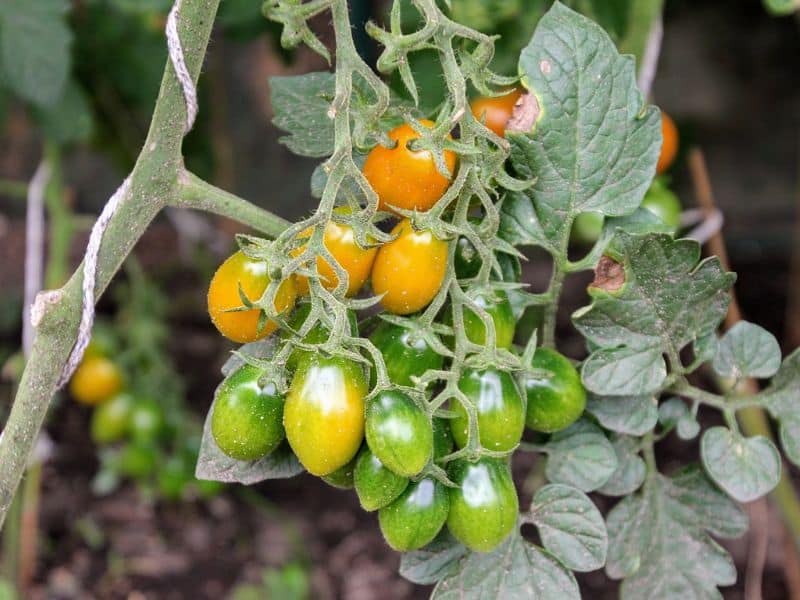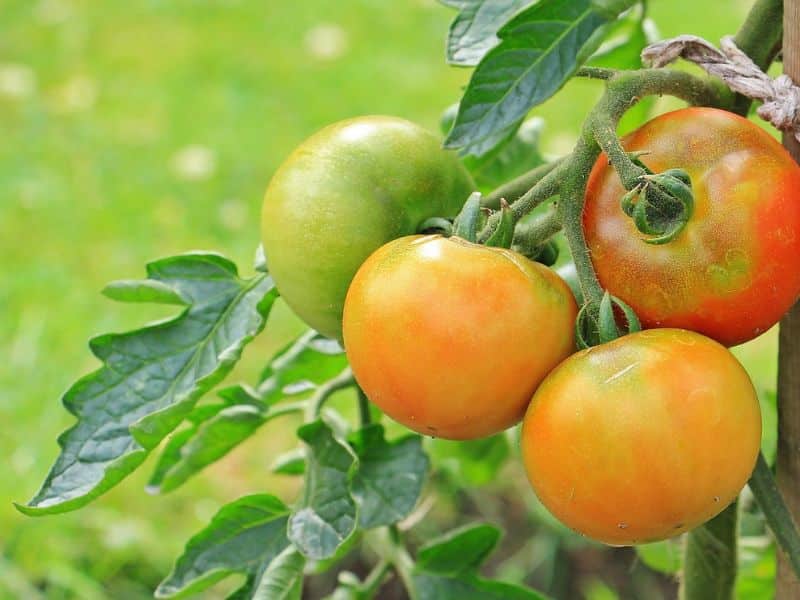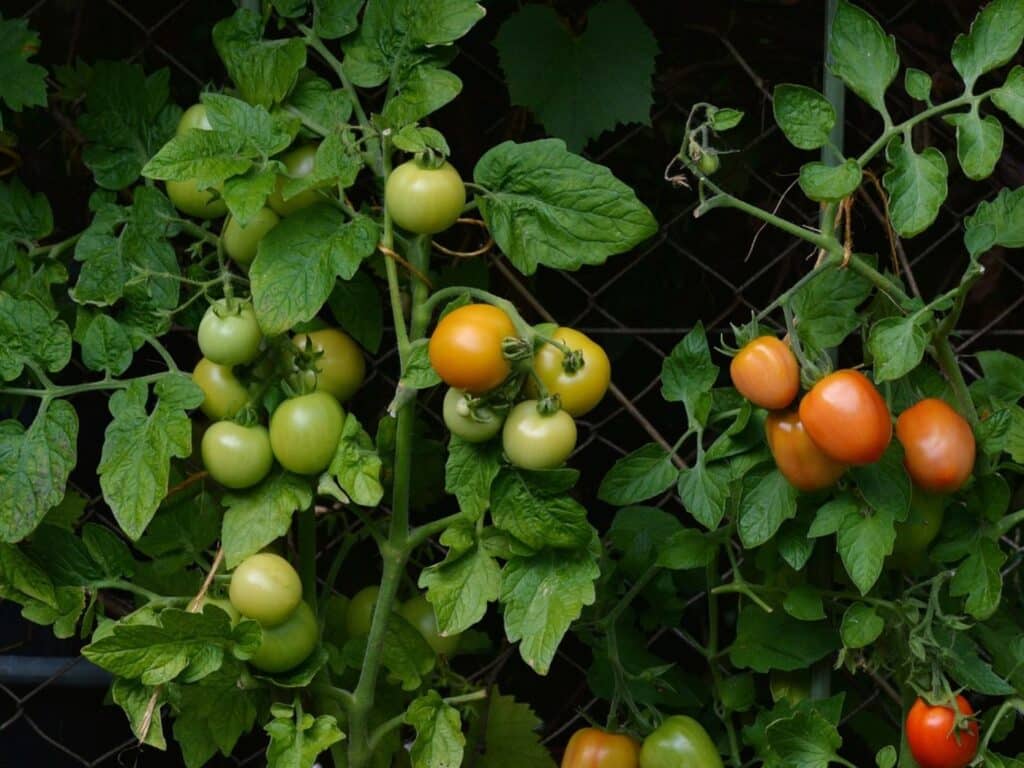Imagine tending to your tomato plants, expecting a bountiful harvest, only to find them wilting, leaves turning yellow, and fruit quality deteriorating. You’ve been diligent with watering, perhaps too diligent, leading to an overwatered tomato plant.
This common gardening mistake can leave you feeling frustrated, questioning where you went wrong. Overwatering is just as harmful as underwatering, affecting the plant’s ability to absorb nutrients and oxygen, leading to poor health and productivity.
Understanding the signs of overwatering and the underlying causes is the first step toward reviving your tomato plants. This article will guide you through identifying symptoms, pinpointing mistakes in your watering routine, and offering actionable solutions to restore your plants’ health.
With the right knowledge and approach, you can turn this setback into a learning experience, ensuring your tomato garden thrives. Let’s delve into how you can save your overwatered tomato plants and prevent future occurrences, ensuring a vibrant and fruitful harvest.
Signs of an Overwatered Tomato Plant

Overwatering is a common misstep that can put your tomato plants on a fast track to trouble. Recognizing the symptoms early can save you a lot of heartache and ensure your garden remains a source of pride and produce. Let’s dive into the tell-tale signs.
Wilting Leaves Despite Wet Soil
Imagine checking on your tomatoes, expecting to see them thriving, but instead, you find them wilting as if they’re screaming for water. Yet, the soil is as wet as if it had just rained.
This paradox signals overwatering. Tomatoes like moisture, but they don’t enjoy swimming. When roots get too much water, they can’t breathe or function properly, leading to droopy leaves.
Yellowing or Brown Leaves
Next up, if your tomato plants are turning into a fall foliage display out of season, with leaves yellowing or browning, it’s a red flag. Overwatering messes with the nutrient uptake, especially nitrogen. This leads to leaves losing their vibrant green color. It’s like the plant’s way of saying, “I’m full, please stop!”
Root Rot and Its Implications
Root rot is the silent killer in the vegetable garden. It starts unseen, below the soil, where excess moisture creates a haven for fungi that attack the roots.
If your plant’s roots have turned mushy and brown, they’re likely struggling to support the plant’s needs. Think of it as trying to drink through a straw that’s falling apart; it’s not going to work well.
Stunted Growth and Lack of Fruit
Last but not least, if your tomato plant seems stuck in time, not growing or producing fruits as it should, it may well be drowning in love—literally. Overwatered plants use all their energy trying to survive instead of growing or fruiting. It’s like they’re stuck in survival mode, forgetting all about the grand plans you had for salsa and marinara sauce.
Keeping an eye out for these signs will help you adjust your watering habits and keep your tomato plants healthy, happy, and fruitful. Remember, they don’t wear life jackets, so it’s up to you to keep their “feet” dry and comfy.
Causes of Overwatering Tomato Plants

Misjudging Water Needs
One of the primary reasons tomato plants get overwatered is a simple misjudgment of their water requirements. Tomatoes need a consistent amount of moisture but are quite susceptible to variations.
The belief that more water equals more growth leads many gardeners astray. Recognizing the plant’s signs, like the state of the soil moisture and the appearance of the leaves, aids in giving them just enough, not too much.
Inadequate Drainage Solutions
Poor drainage is a critical culprit behind overwatered tomato plants. Soil that retains too much water creates an environment where roots can’t breathe, leading to issues like root rot.
Ensuring your garden or pots have proper drainage holes and considering soil composition can dramatically reduce overwatering risks. A well-draining setup prevents water from pooling, safeguarding root health.
Climate and Weather Misconceptions
A common misconception is that tomato plants require the same amount of water regardless of the climate or weather conditions, leading to overwatering during cooler or rainy periods.
Adapting your watering schedule to the current weather, especially during unexpected rainfalls or cooler spells, can help avoid excess moisture. Monitoring weather forecasts and adjusting accordingly keeps plants healthy and hydrated without going overboard.
Overzealous Watering Practices
Lastly, overzealous watering stems from a place of enthusiasm but can do more harm than good. It’s tempting to give your plants extra water, especially when they seem to be under stress or when gardeners fear under-watering.
However, adopting a more measured approach, like checking soil moisture before watering and using a consistent schedule, prevents the pitfalls of too much enthusiasm. A keen eye and a restrained hand are key to balanced watering.
Consequences of Overwatering
When you lavish your tomato plants with too much water, trouble begins to brew beneath the surface. This section explores how overwatering affects your precious crops, from fostering diseases to diluting the very essence of your tomatoes. Let’s dive into the murky waters of overindulgence and learn what’s at stake for your garden.
Increased Susceptibility to Diseases
Sure, your tomato plants can’t swim, but that doesn’t stop them from drowning in excess water. This sogginess becomes a playground for pathogens, making your plants more prone to diseases such as root rot, a nasty condition that turns strong roots into mush.
Think of it as leaving your plants with their feet wet for too long; nobody likes that, not even tomatoes. Furthermore, damp conditions invite fungal diseases, like early blight and septoria leaf spot, turning your tomato garden into a scene straight out of a plant horror movie.
Nutrient Leaching from the Soil
Too much water doesn’t just hang around; it takes vital nutrients on a joyride right out of the soil. This nutrient leaching starves your tomato plants, depriving them of the food they crave: nitrogen, potassium, and phosphorus.
It’s like planning a gourmet meal for your plants and then watching the vitamins and minerals wash away before they can take a single bite. Without these nutrients, your plants struggle to grow, leaving them stunted and you frustrated.
Impact on Tomato Quality and Yield
Lastly, overwatering doesn’t just affect the health of your plants—it sabotages the fruits of your labor, quite literally. Expect your tomatoes to be of lower quality and your yield significantly reduced.
Imagine biting into a tomato, anticipating that burst of flavor, only to be met with a watery disappointment. Overwatered tomatoes can be bland, lacking the rich, tangy taste they’re renowned for.
Additionally, excessive moisture can cause the fruits to crack, making them more susceptible to diseases and pests. It’s a disappointment not just for your taste buds but for your garden’s productivity too.
Keep a careful eye on your watering habits to avoid these pitfalls. By doing so, you’ll protect your plants from the looming shadow of overwatering, ensuring a bountiful, delicious harvest.
Preventing Overwatering in Tomato Plants
Proper Watering Techniques
Getting the watering right for your tomato plants is more art than science. To avoid giving your plants an unintentional soak, aim to water them deeply but infrequently. This method encourages strong root growth.
A good rule of thumb is to check the top inch of soil; if it’s dry, it’s time for a drink. Water in the morning to reduce evaporation and avoid wetting the foliage, which can lead to disease.
Soil and Site Considerations
Choosing the right spot and preparing your soil properly can make a big difference in preventing waterlogged tomato plants. Opt for a location that gets plenty of sunlight and has excellent drainage. If your soil is more clay-heavy, consider amending it with organic matter to improve drainage or using raised beds to keep your tomatoes’ feet dry.
Use of Mulch and Other Protective Measures
Mulching does wonders for your tomato plants. Not only does it help retain moisture in the soil, but it also reduces the soil’s evaporation rate, allowing for less frequent watering.
Organic mulches, like straw or bark chips, serve a double purpose by breaking down over time and enriching the soil. Just remember, a 2-3 inch layer of mulch is sufficient; more than that may well be overdoing it.
Monitoring Tools and Technologies
Embracing a bit of technology can go a long way in keeping your tomato plants happy and hydrated without going overboard. Moisture meters are your best friends, providing a quick and easy way to check whether your plants are thirsty.
For those who love gadgets, installing a drip irrigation system with a timer can be a game-changer, delivering the exact amount of water your plants need, directly to their roots, and never more.
Rescue Measures for Overwatered Tomato Plants
Adjusting Watering Schedules
If you’ve been a bit too generous with the watering can, it’s time to dial it back. Start by letting the soil dry out a bit before giving your tomato plants another drink.
This may well mean skipping a few watering sessions or adjusting your schedule based on the current weather and soil moisture. Use a moisture meter to take the guesswork out of the equation, aiming for moist, not soggy, soil conditions.
Soil Amendments for Better Drainage
Poor drainage could trap your tomato plants in a cycle of soggy roots. Mix in some organic matter like compost or peat moss to improve soil structure and drainage capabilities.
For extreme cases, consider sand or perlite. These amendments increase air pockets in the soil, helping water to flow freely and roots to breathe easier.
Pruning and Disease Management
Overwatering often invites unwanted fungal guests. Keep an eye out for signs of disease and act quickly by removing affected leaves or stems.
Pruning not only helps manage disease but also improves air circulation around the plants. Remember, it’s like giving your plants a haircut; too much at once may well do more harm than good, so approach with care.
When to Start Over with New Plants
Sometimes, despite your best efforts, the damage is too great. If your plants are looking more like a lost cause than a lush garden, it may well be time to start over.
Don’t see it as a failure but as a learning experience. New plants offer a fresh start and, armed with your newfound wisdom on proper watering, you’re more prepared than ever for success.
See more:







